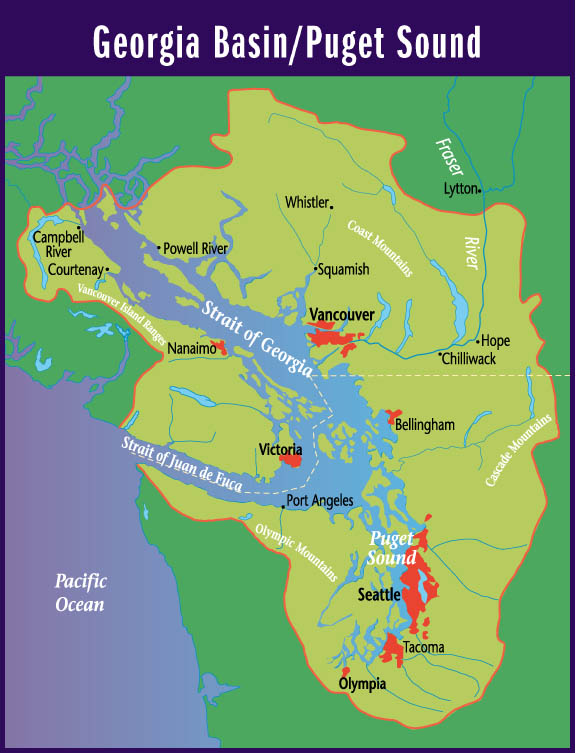
 |
Suggested Locations for the Placement of Environment Canada's New Hydrometric Stations in the Georgia Basin |
| Title Page |
| Introduction |
| Data |
| Methodology |
| Spatial Analysis |
| Problems & Errors |
| Conclusion |
DATA ACQUISITION
AND
MANIPULATION - CONTINUED
Hydologic Zones (Rain, Snow, Transition) Coverages
From my ex-supervisor, Paul
Whitfield, I received ArcView shapefiles that were made in the years following
my co-op term, specifically pertaining to our project. Among these were
coverages of the rain, snow and transition hydrologic
zones. I used FME to convert these to IDRISI vector format. I changed
their reference systems to AlbersBC. I kept these as polygons and made
raster versions of them as well, using the POLYRAS module. I made appropriate
polygon symbol or palette files for all coverages.
Streams Coverage
From Environment Canada I received a large dataset on watersheds and drainage which they themselves had simply downloaded from the BC Fisheries website, http://www.bcfisheries.gov.bc.ca/fishinv/basemaps-maps.html. From this large file, I first eliminated coverages that extended outside the Georgia Basin. In ArcView, I converted the coverages of streams to shapefiles. I then used FME to convert these to IDRISI vector format. For these images, I created a streams line symbol file. I then converted each vector image to a raster image using LINERAS. I used CONCAT to concatenate each of the raster drainage images into one large drainage image. I created a streams palette file. I repeated this process for each major watershed group - Vancouver Island, South Coast and Fraser. I ultimately used CONCAT to create a single raster file of all streams. Figure 12 shows a map of the drainage network for all of the Georgia Basin.
Click here
to see the cartographic model of this process.
Watersheds Coverage
Using the BC Watershed Atlas, (as above), I selected the theme which identifies watersheds by their stream order. Again, for about 15 coverages, I converted each from ArcView coverage to shapefile, shapefile to IDRISI vector, and from vector to raster (using POLYRAS). However, the raster image for these watersheds identified the pixels by their watershed id number, which was of no use to me. Therefore, I had to ASSIGN pixels by their stream order. This entailed querying the databases in Excel to develop the Attribute Value Files. Once all the raster images had been ASSIGNed, I CONCATenated them into one raster image of stream orders. I repeated this process for each major watershed group. Ultimately, I used CONCAT to create one coverage of watershed stream orders. Figure 13 shows this map.
Click here to see the cartographic model of this process.
Note that only the Fraser
group has a watershed, (the Fraser River), of stream order 9. None of the
watershed groups have stream orders of 7 or 8.